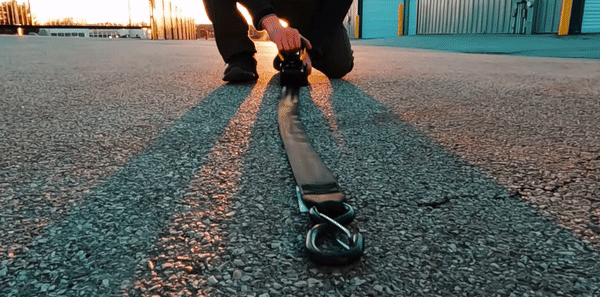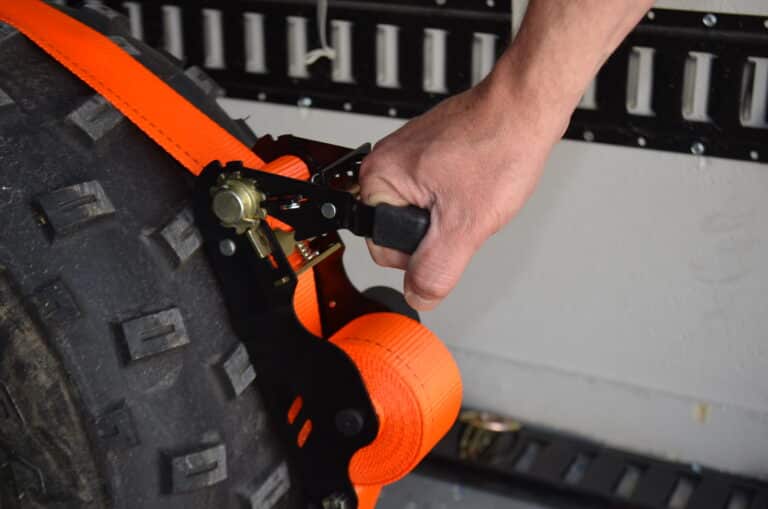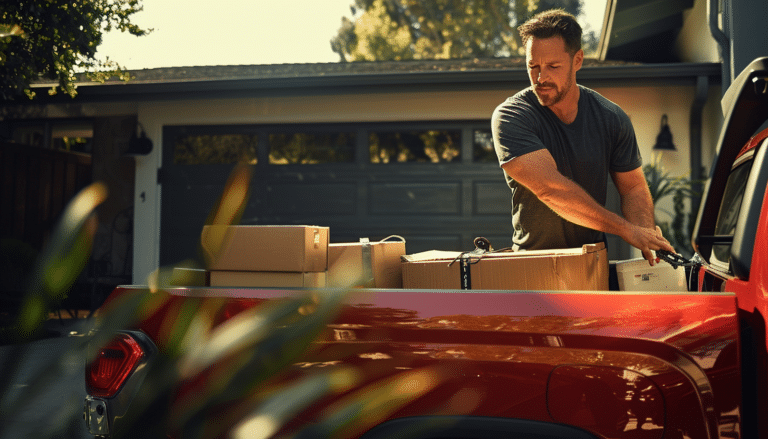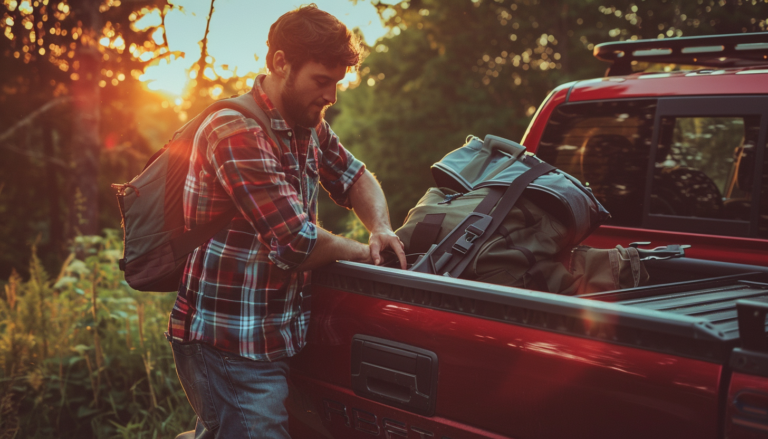5 Steps To Tie Down Your Canoe on a Roof Rack
Canoeing offers a perfect blend of thrill and tranquility, but securing your canoe properly can sometimes bring more anxiety than excitement. In this article, we’ll help ease that stress by recommending some of the best canoe straps on the market and providing step-by-step instructions on how to use them. We’ll also cover how to lift a canoe, so you can enjoy your time on the water without any worries!
Read more: How to Tie down Two Kayaks on Roof Rack With Retractable Ratchet Straps?
How to strap a canoe to a roof rack?
Step 1: Lift the canoe
Be careful with this step—lifting in the wrong position can really mess up your back. First, flip your canoe over and head to the back of it. Make sure to lift with your legs, not your back. Get a good grip and pick it up over your head. Then, you’re gonna shimmy your hands along the gunnels, working toward the center of the canoe. Keep walking and lifting as you move toward the middle, making sure to lift with straight arms. Once you’re at the center, rest the canoe on your shoulders.
With the canoe on your shoulders, walk toward the back of your car and lean the front of the canoe against the back of the vehicle. Now, just start pushing the canoe up, making sure it’s balanced and centered on the roof rack.
Step 2: Hook the canoe straps on the roof rack
Hook the S hook on one side of the roof rack, both front and back!
Step 3: Pull the canoe strap
Very simple, just press the release button, pull the handle up to 90° or 180° depending on the straps you got, and pull out the strap parallel to the reel.
Step 4: Hook and tighten the straps
Chuck the strap over, hook the strap on another side of the rack, and tighten it by pulling up and down with the ratchet handle until it feels tight enough. To lock the canoe straps in place, simply push the handle down into the lock position.
Step 5: Release
Unhook the retractable tie down straps from the rack, open the ratchet handle to 90° or 180°, give the strap a gentle pull outward, and the strap will automatically retract!
Best canoe tie down straps
For securing your canoe, there are various types of canoe tie-down straps available to suit your needs such as cam buckle straps and ratchet straps. However, I’d personally recommend choosing “retractable ratchet straps” to tie down your canoe because of how convenient they are.
Read more: Retractable Ratchet Straps VS. Traditional Ratchet Straps
Below are the two retractable tie-down straps you can consider using:
Strap 1: 1 inch by 10 feet
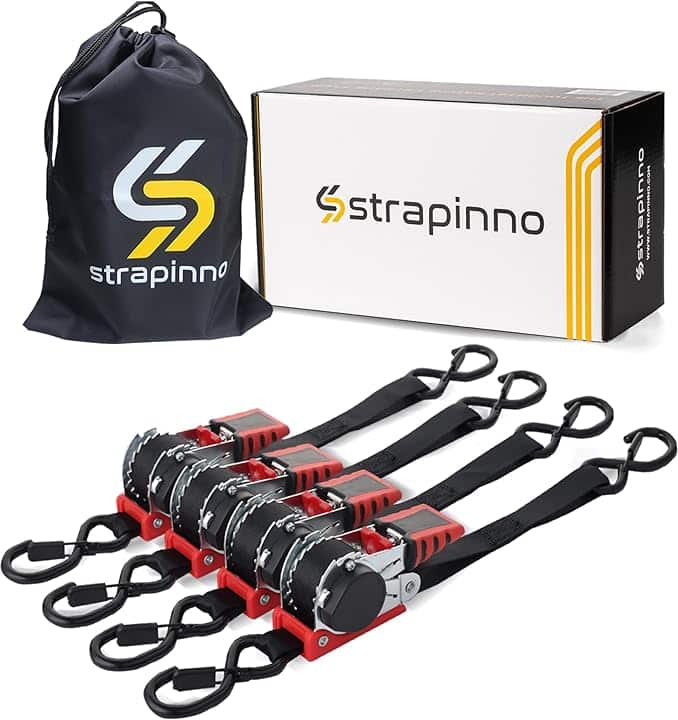
Strap 2: 1 inch by 12 feet
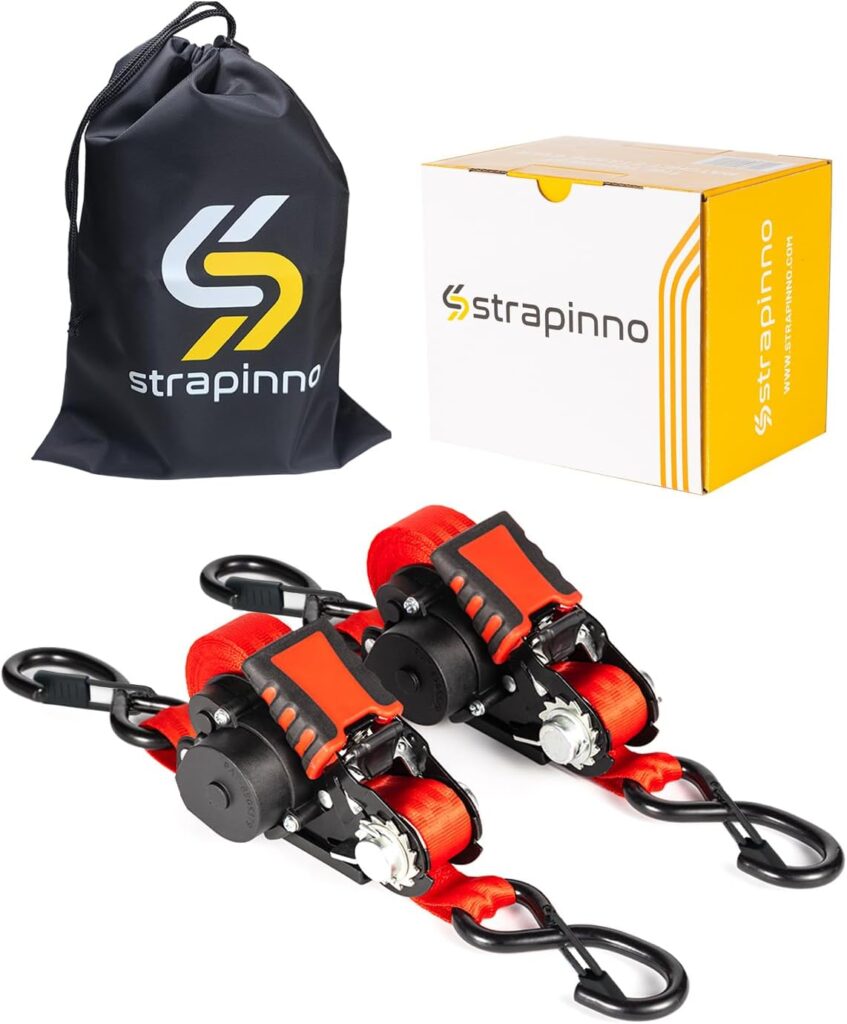
Strap type | Retractable Ratchet Tie-Down Straps | Retractable Ratchet Tie-Down Straps |
Working load limit | 500lbs / 227kgs | 600lbs / 272kgs |
Breaking strength | 1500lbs / 680kgs | 1800lbs / 816kgs |
Hook type | S hooks | |
Some factors to consider when choosing the perfect canoe tie down straps for you:
- Length and width
- material and durability
- strength and load capacity
If you’re uncertain about where to hook your canoe tie-down straps, you can consider using soft loop straps to help you solve the problem. All you have to do is to wrap a soft loop strap around any suitable part of your canoe, hook the tie-down strap to it, and your problem will be solved!
Read more: Breaking Strength vs Working Load Limit: Which One to Look At?
Benefits of using retractable straps
You might be curious about what makes these retractable straps stand out, and we can’t wait to share their benefits. Below, we’ve listed out the reasons we believe retractable ratchet straps are a worthy investment and why you should consider getting one too:
- Automatically retract with a press of a button
- Less than 1 minute from setup to store
- No excessive strap
- No threading strap buckles before use or tying ends off
6 safety tips for tying down your canoe
1. Use Proper Straps: Always utilize straps designed specifically for securing canoes to ensure they can handle the stress. Definitely make sure you are avoiding using canoe straps that are low on work load limit.
2. Even Pressure Distribution: Ensure the straps distribute pressure evenly across the canoe to prevent warping or damage. Ideally, using even numbering of ratchet straps can help distribute both of the tying and carrying weight of the canoe or item.
3. Double-Check Tightness: Before departing, give all the straps a little pull to make sure they are securely fastened.
4. Inspect Straps Regularly: Periodically check straps for wear and tear to prevent unexpected failures.
5. Avoid Over-tightening: Ensure straps are tight enough to secure the canoe but not so tight that they cause damage.
6. Carry Spare Straps: Have an extra set of tie-down straps on hand for emergencies.
Let’s sum it up!
Choosing the right canoe straps and using them properly is crucial for the safety and longevity of your canoe. Strapinno’s retractable ratchet straps not only secure your canoe during transport but also make your life a whole lot easier, giving you peace of mind. And hey, be prepared for some envious glances—the retractable feature is a real standout, especially when others are still fumbling with tying off loose ends. Enjoy the ease a retractable ratchet strap provides, and happy canoeing!
Frequently Asked Questions
1. Should you use a ratchet strap for canoes?
Yes, you could use a ratchet strap for tying down a canoe. However, for safety reasons, we suggest using a retractable ratchet strap because it keeps everything neat and avoids any loose ends that could get caught on something.
2. What kind of rope do you use to tie down a canoe?
If you’re using rope, choose polypropylene or natural fiber rope. They are not as safe or reliable as a retractable ratchet strap—which we recommend— but a rope can still work if you use it carefully.
3. Do you need to tie down the front and back of the canoe?
Yes, for you and your canoe’s safety, tie down your canoe both front and back with retractable ratchet straps to ensure safety during transportation.
4. How do you put a canoe on a car by yourself?
Step 1: Position the Canoe
Place the canoe near the car, parallel to it, and ensure that nothing obstructive is in the way. The bow (front) should be facing the front of the car.
Step 2: Lift the Canoe
Stand at the center of the canoe, bend your knees, and lift the canoe by its gunwales (the sides) using a proper lifting technique to avoid back strain. Lift the canoe above your head, positioning it vertically.
Step 3: Place the Canoe on the Car
Move to the rear end of the canoe, still holding it vertically. Gently rest the bow on the rear of the car roof or on the foam blocks/pads you’ve set up. Make sure the canoe is centered.
Step 4: Slide the Canoe
Go to the other end of the canoe (the stern) and carefully lift it, sliding the canoe forward until it is properly positioned on the roof rack. The canoe should be centered with equal lengths extending over the front and rear of the car.
Step 5: Secure the Canoe
Use retractable straps to secure the canoe to the roof rack. Attach the straps over the hull and through the roof rack, tightening them to ensure the canoe is firmly in place but not so tight that they damage the canoe.
Step 6: Tie the Bow and Stern
For added security, tie lines from the bow and stern of the canoe to the front and rear of your vehicle. This will prevent the canoe from shifting during transportation.

